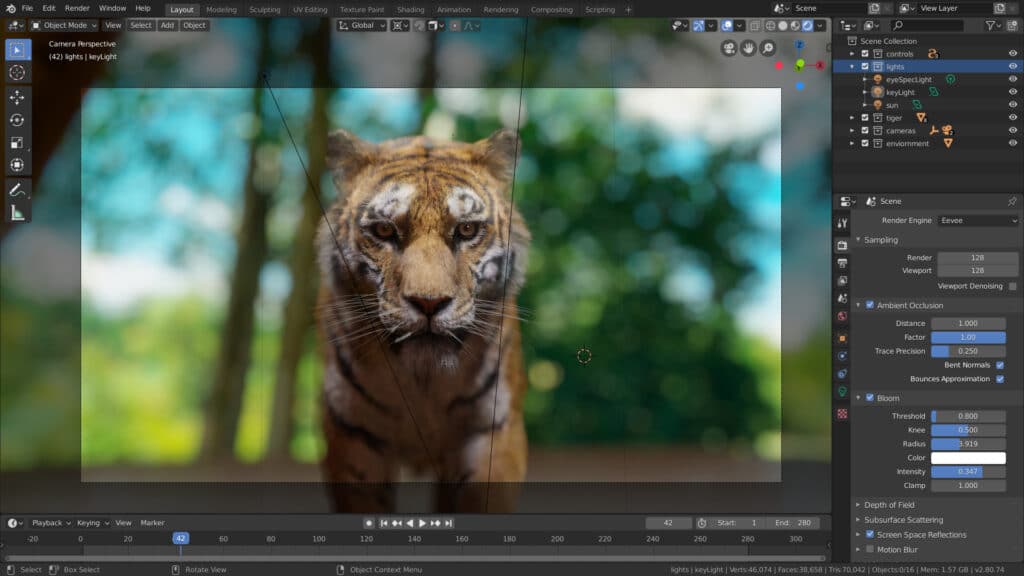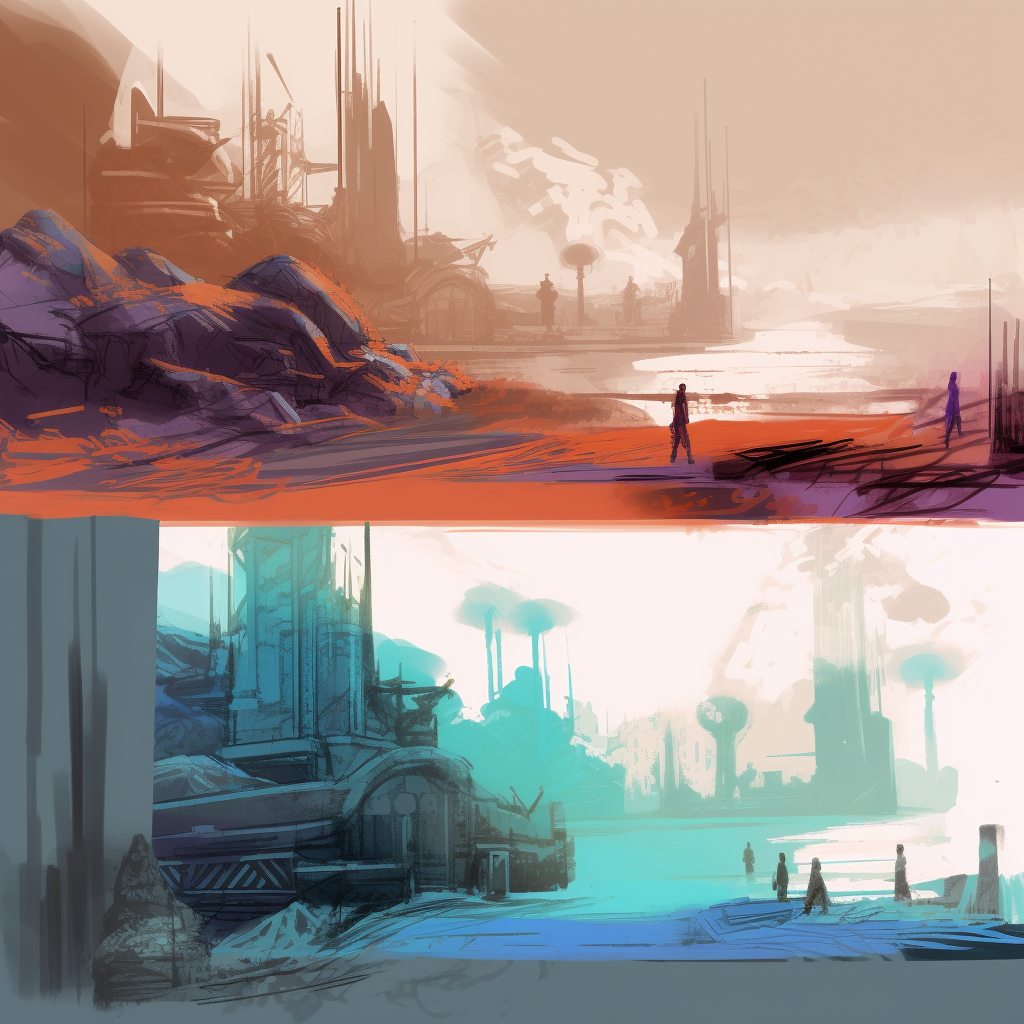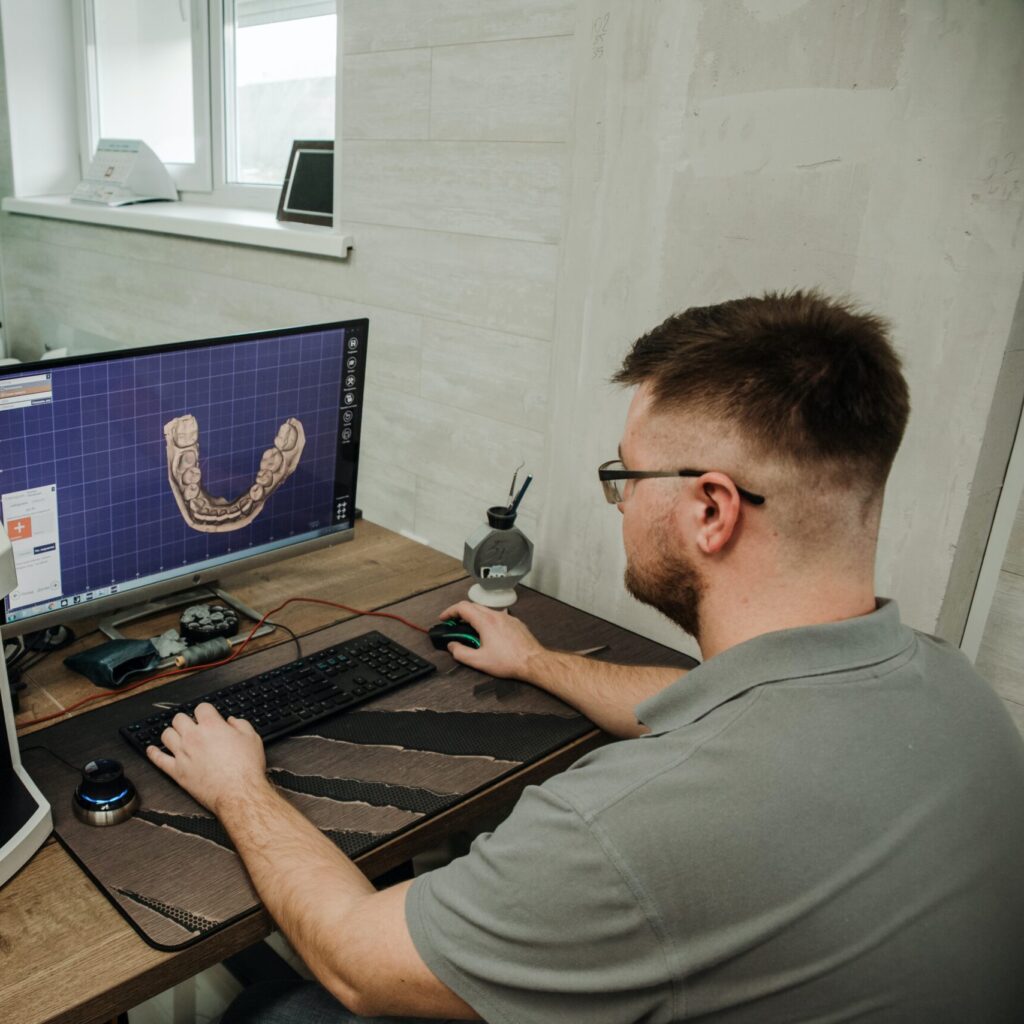From the complex and sprawling worlds of console games to the casual, cartoon-like apps on our phones, one thing is clear: 3D games are everywhere, fueling our daily entertainment after a hard day at work.
But have you ever wondered how these amazing 3D worlds are made? Welcome to the world of 3D modeling in games!
In this article, we’ll explore some of the core tools and software 3D modelers have at their disposal, and dive a bit into the creative process surrounding 3D games. We’ll also talk about some technical challenges 3D game artists may face when creating their models.
3D modeling in games: what are the main tools and programs?
3D modeling artists rely on a variety of tools and software tailored to their needs. One of the most popular software suites in the industry is Autodesk Maya. Loved for its versatility and robust feature set, Maya allows artists to sculpt intricate models, animate characters, and bring environments to life with stunning visual effects.
Another powerhouse in the world of 3D modeling is Blender. Praised for its open-source nature and vibrant community of users, Blender offers a complete suite of tools for modeling, rigging, animation, simulation, rendering, compositing, and motion tracking. Its accessibility and extensive capabilities make it a favorite among seasoned professionals and aspiring artists alike.

For those looking for industry-standard tools, Pixologic’s ZBrush is considered to be the go-to software for digital sculpting and painting. With its intuitive interface and powerful sculpting brushes, ZBrush empowers artists to work with minute details and lifelike textures, making it an indispensable tool for character and creature modeling.
When it comes to texturing and rendering, Substance Painter and Substance Designer reign supreme. These software packages revolutionize the texture creation process, offering a node-based workflow that enables artists to create complex materials and textures with unparalleled realism and efficiency, saving time and streamlining the process.
Beyond these flagship programs, game artists often rely on a combination of specialized tools and plugins to streamline their workflows and achieve their creative vision. From UV mapping tools like Unfold3D to real-time rendering engines like Unreal Engine and Unity, the arsenal of tools available to 3D modelers continues to expand, empowering artists to push the boundaries of imagination and innovation in game development.
The creative process behind 3D modeling in games
The creative process behind 3D modeling in games involves multiple steps and often requires the collaboration of various artists within a game studio. From concept to completion, each stage begs for careful attention to detail and creativity.
Let’s take a closer look at the key steps involved in bringing 3D models to life in games:
Conceptualization and reference gathering
The process begins with conceptualization, where artists brainstorm ideas and sketch rough designs (the so-called “concept art”) based on the game’s requirements and storyline. This stage lays the foundation for the entire modeling process, defining the visual style, themes, and overall aesthetic of the game.
Once the concept is solidified, artists gather reference materials such as images, videos, and real-life objects relevant to the design. These references serve as a guide for accuracy and help other artists capture the desired look and feel of the models.

Blocking out
In the initial stages of modeling, artists create basic shapes and forms to represent the overall structure of the model. This phase, known as blocking out, allows artists to establish proportions, scale, and composition before diving into finer details.
High poly modeling
With the basic shape established, artists move on to high poly modeling, where finer details are added to the model. It’s also here that creases and other imperfections are sculpted into the artwork. This stage requires precision and skill to ensure that the model looks realistic and visually appealing.
UV mapping
UV mapping is the process of unwrapping the 3D model’s surface and flattening it into a 2D space, similar to unwrapping a paper box. This step is critical for applying textures accurately to different parts of the model without distortion, often being one of the most hated stages of 3D modeling in games.
Texturing
Once the UV mapping is complete, artists apply textures to the model’s surface to add color, patterns, and visual effects. Texturing breathes life into the model, adding depth and realism to its appearance.
Rigging and animation
In games where characters or objects need to move, rigging and animation come into play. Rigging involves creating a virtual skeleton (or rig) for the model and assigning control points for movement, and properly doing so can take a lot of time. Animators then use these rigs to bring the model to life through movement and expression.

Optimization
Before the model is ready for integration into the game engine, it undergoes optimization to reduce its polygon count and file size. Optimization is crucial for ensuring smooth performance and efficient resource usage within the game.
Phew, that’s a lot!
The technical challenges 3D game artists face
One significant challenge is the hardware requirements for high-polygon modeling. Creating detailed models often demands powerful computers with substantial processing power and memory. High-poly modeling can quickly overwhelm less capable systems, leading to sluggish performance and workflow disruptions.
As hinted before, optimization is another critical technical challenge for 3D game artists. They must balance visual fidelity with performance, optimizing models, textures, and animations to maintain a consistent frame rate and prevent lag or crashes.
To help them overcome this issue, 3D artists often employ techniques like LOD (Level of Detail), where objects appear simpler at a distance and gradually gain detail as the player approaches.
Compatibility across platforms adds another layer of complexity. Game artists must ensure that their assets are compatible with various hardware configurations, operating systems, and graphics APIs. They must stay up-to-date with current technologies and industry standards to deliver a seamless gaming experience across different platforms.
Moreover, managing large-scale projects with vast repositories of 3D models, textures, and animations requires efficient asset management systems to streamline collaboration and mitigate bottlenecks as projects expand in scope and complexity.

3D modeling in games: closing thoughts
As we’ve explored in this article, creating 3D models for games involves a lot of steps, challenges, and hard work. From coming up with ideas to fixing technical issues, game artists have to handle many things to make the games we love.
Despite the tricky parts, making 3D models is exciting because it lets us create amazing worlds and fill in the gaps with stories, characters, puzzles, enemies, and, of course, gameplay! It’s like painting a picture – but in a digital world where players can jump in and explore.
At Main Leaf, we know how 3D modeling in games is extremely important. That’s why we’re here to help you make your game dreams a reality, be it a casual 2D mobile game or a fully-fledged 3D masterpiece.
Whether you’re starting a new project or want to make your current game even better, our team is ready to lend you a helping hand. Our expertise, talented professionals, and streamlined game development process are hard to match! Get in touch with us today and let’s bring your ideas to life!

